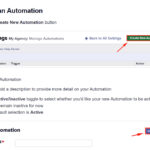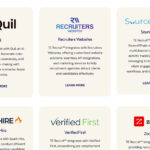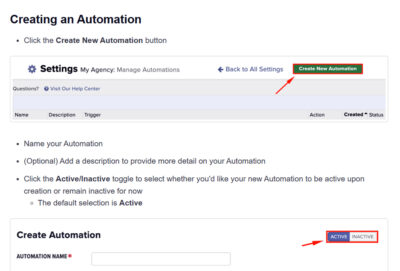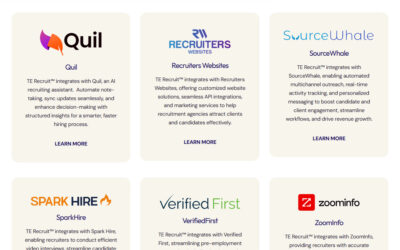In the job market, agency recruiters and search consultants constantly seek ways to enhance their efficiency and effectiveness. The adoption of advanced technologies, particularly Applicant Tracking Systems (ATS) and recruiting software, has revolutionized the recruitment process. Among the various features offered by these systems, candidate sourcing reports stand out as a crucial tool for achieving success in recruitment. This article delves into the significance of candidate sourcing reports and their impact on the recruitment process, expanding on their numerous benefits and practical applications.
Understanding Candidate Sourcing Reports
Candidate sourcing reports are detailed analyses generated by ATS or recruiting software that provide insights into the sourcing strategies and channels used to attract candidates. These reports encompass a variety of data points, including the number of candidates sourced from different channels, the quality of candidates, the time taken to fill positions, and the overall effectiveness of each sourcing method. By offering a comprehensive overview of the recruitment landscape, these reports enable recruiters to make informed decisions and optimize their sourcing strategies.
Enhancing Recruitment Strategy
Data-Driven Decision Making
One of the primary advantages of candidate sourcing reports is their ability to support data-driven decision making. In today’s recruitment environment, intuition and experience alone are not enough. Recruiters need concrete data to guide their strategies. Sourcing reports provide a wealth of data that can be analyzed to identify trends, patterns, and areas for improvement.
For instance, by examining sourcing reports, recruiters can determine which channels yield the highest volume of candidates and which ones produce the highest quality candidates. This differentiation is crucial because a high volume of applicants does not necessarily translate to high-quality hires. By focusing on data, recruiters can make strategic decisions that enhance the overall effectiveness of their sourcing efforts.
Furthermore, data-driven decision making helps in justifying recruitment strategies to stakeholders. Whether it’s senior management or clients, having concrete data to back up recruitment choices builds trust and credibility. It also enables recruiters to set realistic expectations and demonstrate the value of their efforts.
Identifying High-Performing Channels
Not all sourcing channels are created equal. Some channels consistently produce high-quality candidates, while others may yield a high volume of applicants with lower overall suitability for the roles. Candidate sourcing reports help recruiters identify which channels consistently produce top-tier candidates.
For example, a recruiter might find that job boards like Indeed or LinkedIn generate a large number of applications, but the quality of these candidates varies significantly. On the other hand, niche job boards or industry-specific events might produce fewer candidates, but those candidates may be better suited for specialized roles. By identifying high-performing channels, recruiters can prioritize their efforts and allocate resources more effectively.
Additionally, understanding the strengths and weaknesses of each sourcing channel allows recruiters to tailor their approach. They can optimize job postings for specific platforms, develop targeted marketing campaigns, and build stronger relationships with partners and vendors. This strategic focus ensures that recruiters get the most out of each sourcing channel, ultimately improving the quality of hires.
Optimizing Sourcing Efforts
By providing a clear picture of the sourcing landscape, candidate sourcing reports enable recruiters to optimize their sourcing efforts. This optimization involves not only focusing on high-performing channels but also continuously refining sourcing strategies to adapt to changing market conditions and candidate behaviors.
For instance, if a particular job board consistently delivers top-tier candidates, recruiters can invest more in that platform. Conversely, if a channel is underperforming, recruiters can either improve their strategy for that channel or redirect resources to more fruitful sources. This adaptability is crucial in a dynamic recruitment environment where trends and candidate preferences can shift rapidly.
Optimization also extends to the timing and frequency of job postings. Sourcing reports can reveal patterns related to the best times to post job openings to maximize visibility and engagement. By aligning recruitment efforts with these insights, recruiters can ensure their job postings reach the right audience at the right time.
Improving Candidate Quality
Tracking Candidate Quality
Candidate quality is a critical metric in recruitment. Sourcing reports help recruiters track the quality of candidates sourced from various channels. Metrics such as the rate of candidates progressing to interviews, job offers, and hires provide insights into the effectiveness of each sourcing method. This helps ensure that recruiters focus on channels that produce not just a high volume of candidates, but high-quality candidates as well.
For example, a recruiter might find that candidates from employee referral programs have a higher conversion rate from application to hire compared to those from job boards. This insight indicates that referrals tend to be more aligned with the company’s needs and culture, making them a valuable source of high-quality candidates. By prioritizing such channels, recruiters can enhance the overall quality of their talent pool.
Furthermore, tracking candidate quality allows recruiters to identify and address any gaps in their sourcing strategy. If a particular channel consistently produces candidates who do not meet the required qualifications, recruiters can either refine their job postings or reconsider the use of that channel. This continuous feedback loop ensures that sourcing efforts remain aligned with the organization’s talent needs.
Refining Job Descriptions and Postings
Sourcing reports can also highlight patterns and trends related to job descriptions and postings. By analyzing which descriptions attract the best candidates, recruiters can refine their job postings to be more appealing and accurate. This iterative process of refinement ensures that the job postings are continuously optimized to attract top talent.
For instance, if a sourcing report indicates that certain keywords or phrases in job descriptions result in a higher quality of applications, recruiters can incorporate these elements into future postings. Similarly, if specific job titles or descriptions consistently attract unqualified candidates, recruiters can make adjustments to better target the desired talent pool.
Refining job descriptions also involves aligning them with the company’s employer brand. Clear, engaging, and accurate job postings not only attract better candidates but also enhance the overall candidate experience. This alignment ensures that candidates have a clear understanding of the role and the organization, reducing the likelihood of mismatched expectations and increasing the chances of successful hires.
Enhancing Candidate Experience
A positive candidate experience is essential for attracting and retaining top talent. Sourcing reports can provide insights into the candidate journey from initial contact to final hire. By understanding which channels provide the best candidate experience, recruiters can improve their processes and ensure a smoother, more engaging experience for candidates.
For example, sourcing reports might reveal that candidates sourced through certain channels have a higher satisfaction rate with the application process. This insight can guide recruiters in streamlining and improving their application procedures across all channels. Whether it’s simplifying the application form, providing timely updates, or offering more personalized communication, these improvements can significantly enhance the candidate experience.
Moreover, a positive candidate experience contributes to the employer’s brand reputation. Candidates who have a good experience, even if they are not ultimately hired, are more likely to speak positively about the company. This positive word-of-mouth can attract more high-quality candidates and build a strong talent pipeline for future hiring needs.
Increasing Efficiency and Reducing Time-to-Hire
Streamlining Recruitment Processes
Sourcing reports offer a comprehensive view of the recruitment process, highlighting bottlenecks and inefficiencies. By identifying these areas, recruiters can streamline their processes, reduce time-to-hire, and improve overall efficiency. This is particularly important in a competitive job market where top candidates are often off the market quickly.
For example, a sourcing report might indicate that the screening stage of the recruitment process takes longer than necessary, causing delays in moving candidates to the next stage. By addressing this bottleneck, recruiters can expedite the screening process, ensuring that qualified candidates are not lost to competitors due to prolonged wait times.
Streamlining recruitment processes also involves leveraging technology to automate repetitive tasks. ATS and recruiting software can automate activities such as resume screening, interview scheduling, and candidate communication. By freeing up recruiters’ time, these technologies enable them to focus on more strategic aspects of recruitment, such as building relationships with candidates and hiring managers.
Reducing Recruitment Costs
Effective sourcing reports can lead to significant cost savings. By focusing on high-performing channels and eliminating underperforming ones, recruiters can reduce wasted resources and lower overall recruitment costs. Additionally, by improving the efficiency of the recruitment process, organizations can reduce the cost-per-hire.
For instance, if a sourcing report reveals that certain job boards or advertising channels have a low return on investment, recruiters can redirect their budget to more effective sources. This targeted approach ensures that recruitment dollars are spent wisely, maximizing the impact of each dollar invested.
Moreover, reducing recruitment costs extends beyond the sourcing stage. A streamlined and efficient recruitment process reduces the time and resources needed to fill positions, leading to lower overall hiring costs. These cost savings can be reinvested in other areas of the recruitment strategy, such as employer branding or candidate engagement initiatives.
Enhancing Collaboration and Communication
Sourcing reports provide a common ground for collaboration and communication among recruitment teams. By sharing these reports, recruiters can align their efforts, share best practices, and work together to improve the overall recruitment strategy. This collaborative approach leads to more cohesive and effective recruitment processes.
For example, a recruitment team might use sourcing reports to conduct regular reviews of their sourcing strategies. By discussing the data and insights from these reports, team members can identify successful tactics, address challenges, and develop a unified approach to sourcing candidates. This collaboration ensures that all team members are working towards the same goals and can leverage each other’s expertise and experiences.
Enhanced communication also extends to stakeholders outside the recruitment team. Sharing sourcing reports with hiring managers, senior leaders, and clients provides transparency and builds trust. Stakeholders can see the progress and effectiveness of recruitment efforts, making them more likely to support and invest in the recruitment strategy.
Compliance and Reporting
Meeting Regulatory Requirements
In many industries, compliance with regulatory requirements is a critical aspect of the recruitment process. Sourcing reports help ensure that recruitment activities are documented and transparent, making it easier to meet regulatory standards. This is particularly important for agencies operating in highly regulated sectors such as finance, healthcare, and government.
For example, regulatory requirements might mandate that organizations document their recruitment processes, including how candidates are sourced, screened, and selected. Sourcing reports provide a detailed record of these activities, making it easier to demonstrate compliance during audits or inspections. This documentation helps mitigate the risk of regulatory violations and associated penalties.
Moreover, sourcing reports can support diversity and inclusion initiatives, which are increasingly subject to regulatory scrutiny. By tracking and analyzing data on candidate demographics, recruiters can ensure that their sourcing strategies promote diversity and comply with equal opportunity regulations. This proactive approach not only helps meet regulatory requirements but also enhances the organization’s reputation as an inclusive employer.
Providing Transparency to Stakeholders
Transparency is key to building trust with stakeholders, including clients, hiring managers, and candidates. Sourcing reports provide detailed insights into the recruitment process, offering transparency and accountability. This transparency helps build trust and confidence among stakeholders, leading to stronger relationships and better outcomes.
For instance, clients and hiring managers want to understand how their recruitment partners are sourcing candidates and the effectiveness of these efforts. Sourcing reports provide clear, quantifiable data that can be shared with stakeholders, demonstrating the value of the recruitment strategy. This transparency fosters trust and collaboration, ensuring that all parties are aligned and working towards common goals.
Furthermore, transparency extends to candidates as well. Candidates who have a clear understanding of the recruitment process and the sourcing channels used are more likely to trust the organization and engage positively. This trust is crucial for building long-term relationships with candidates, even if they are not selected for the current role.
Auditing and Continuous Improvement
Regular auditing of recruitment processes is essential for continuous improvement. Sourcing reports provide the data needed to conduct thorough audits, identify areas for improvement, and implement changes. This ongoing process of auditing and improvement ensures that recruitment practices remain effective and aligned with organizational goals.
For example, a recruitment team might conduct quarterly audits of their sourcing strategies using data from sourcing reports. These audits can reveal trends, successes, and areas for improvement, guiding the team in making data-driven adjustments to their strategy. This continuous improvement approach ensures that the recruitment process evolves with changing market conditions and organizational needs.
Auditing also helps in identifying and addressing any biases or gaps in the recruitment process. By analyzing sourcing reports, recruiters can ensure that their strategies promote diversity and inclusion and that all candidates are treated fairly. This commitment to continuous improvement enhances the overall effectiveness and integrity of the recruitment process.
Case Studies and Real-World Examples
To illustrate the importance of candidate sourcing reports, let’s consider a few real-world examples:
Tech Industry Recruitment
A leading tech company was struggling with high turnover rates and a lengthy time-to-hire. By utilizing candidate sourcing reports, the recruitment team identified that candidates sourced from niche tech job boards and industry-specific events had a higher retention rate and shorter time-to-hire. By focusing their efforts on these channels, the company was able to significantly reduce turnover and improve the efficiency of their recruitment process.
For instance, the sourcing report revealed that candidates from industry-specific events had a deeper understanding of the company’s technology stack and culture, leading to better job fit and higher retention rates. By investing more in these events and building stronger relationships with attendees, the company was able to attract top talent that stayed longer and contributed more effectively.
Healthcare Recruitment
A healthcare recruitment agency was facing challenges in attracting qualified candidates for specialized roles. Sourcing reports revealed that employee referrals and partnerships with professional healthcare organizations were the most effective channels. By investing more in these channels and leveraging their network, the agency successfully increased the quality and quantity of their candidate pool, filling positions more quickly and effectively.
For example, the agency’s sourcing report indicated that candidates referred by current employees had a higher success rate in interviews and job offers. This insight led the agency to implement a more robust employee referral program, offering incentives and recognition to employees who referred qualified candidates. This strategy not only improved the quality of hires but also boosted employee engagement and satisfaction.
Finance Sector Recruitment
A financial services firm needed to improve diversity in their hiring process. Sourcing reports highlighted that job fairs and partnerships with diversity-focused organizations were the most successful in attracting a diverse candidate pool. By prioritizing these channels and continuously refining their approach, the firm was able to enhance diversity in their workforce and achieve their inclusion goals.
For instance, the firm’s sourcing report revealed that candidates from diversity-focused job fairs were more likely to advance through the recruitment process and receive job offers. This insight prompted the firm to increase their participation in such events and develop targeted outreach strategies to engage with diverse talent. By prioritizing diversity-focused channels, the firm not only improved the diversity of their workforce but also fostered a more inclusive culture.
Future Trends and Innovations
As technology continues to evolve, so too will the capabilities of ATS and recruiting software. Future trends and innovations are likely to further enhance the value of candidate sourcing reports:
Artificial Intelligence and Machine Learning
AI and machine learning are set to revolutionize candidate sourcing. Advanced algorithms can analyze vast amounts of data to identify patterns and predict the success of various sourcing channels. These technologies will enable recruiters to make even more precise and effective sourcing decisions.
For example, AI-powered sourcing tools can analyze historical data to identify which sourcing channels are most likely to yield successful hires for specific roles. By leveraging these insights, recruiters can develop more targeted and efficient sourcing strategies, reducing the time and effort required to find the right candidates.
Moreover, machine learning algorithms can continuously learn and adapt based on new data, ensuring that sourcing strategies remain effective and up-to-date. This dynamic approach to candidate sourcing allows recruiters to stay ahead of the competition and respond quickly to changing market conditions.
Predictive Analytics
Predictive analytics will play a crucial role in the future of recruitment. By analyzing historical data, predictive analytics can forecast the success of different sourcing strategies, helping recruiters stay ahead of the curve and continuously improve their sourcing efforts.
For instance, predictive analytics can help recruiters identify which sourcing channels are likely to produce the best candidates for upcoming hiring needs. This foresight allows recruiters to proactively engage with potential candidates and build talent pipelines, ensuring that they are ready to fill positions as soon as they become available.
Predictive analytics can also support workforce planning by forecasting future talent needs based on business growth and market trends. This strategic approach to talent acquisition ensures that organizations are well-prepared to meet their staffing requirements and achieve their business goals.
Integration with Social Media and Professional Networks
The integration of ATS and recruiting software with social media and professional networks will become increasingly seamless. This will provide recruiters with richer data and more insights into candidate behavior and preferences, further enhancing the effectiveness of sourcing reports.
For example, integrating ATS with platforms like LinkedIn, Twitter, and Facebook allows recruiters to access a broader pool of candidates and engage with them through targeted campaigns. By leveraging social media data, recruiters can gain insights into candidates’ professional backgrounds, interests, and networks, enabling more personalized and effective outreach.
Moreover, integration with professional networks and communities allows recruiters to build relationships with passive candidates who may not be actively seeking new opportunities but are open to the right offer. This proactive approach to candidate engagement helps recruiters stay connected with top talent and quickly fill positions when they become available.
Enhanced Collaboration Tools
Future recruiting software will likely offer enhanced collaboration tools, allowing recruitment teams to work more closely together and share insights in real time. This will lead to more cohesive and effective recruitment strategies and better overall outcomes.
For example, advanced collaboration features such as real-time data sharing, collaborative dashboards, and integrated communication tools enable recruitment teams to coordinate their efforts seamlessly. Team members can share sourcing reports, discuss strategies, and make data-driven decisions together, ensuring that everyone is aligned and working towards common goals.
Enhanced collaboration tools also support cross-functional teamwork, allowing recruiters to collaborate with hiring managers, HR professionals, and other stakeholders more effectively. This integrated approach to recruitment ensures that all parties are involved in the process and can contribute to the success of the talent acquisition strategy.
Candidate Sourcing Reports: A Strategic Asset
In the fast-paced world of talent acquisition, agency recruiters and search consultants must leverage every tool at their disposal to stay competitive. Candidate sourcing reports, generated by advanced ATS and recruiting software, are invaluable in this regard. These reports provide the data and insights needed to enhance recruitment strategies, improve candidate quality, increase efficiency, ensure compliance, and foster transparency and collaboration.
By understanding the importance of candidate sourcing reports and integrating them into their recruitment processes, agency recruiters and search consultants can achieve greater success in attracting and retaining top talent. As technology continues to advance, the capabilities of these reports will only grow, offering even more opportunities for innovation and improvement in the recruitment landscape.
In summary, candidate sourcing reports are not just a feature of recruiting software; they are a strategic asset that can transform the way recruiters operate, leading to better outcomes for organizations and candidates alike. By embracing the power of data and continuously refining their sourcing strategies, recruiters can navigate the complexities of the talent market with confidence and achieve their hiring goals.








